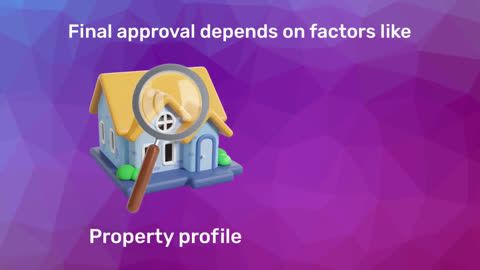The term "variable" means the rate is not fixed. It adjusts over time, often in response to changes in the economy, inflation, or monetary policies. When the RBI increases the repo rate, loans become more expensive. When it lowers the rate, borrowing becomes cheaper.
How does a variable repo rate work?
- Set by the RBI: The RBI revises the repo rate during its monetary policy meetings.
- Banks follow the change: Banks adjust their interest rates based on the new repo rate.
- Direct impact on borrowers: If the repo rate increases, borrowers may see their loan EMIs go up. If it decreases, EMIs can go down.
Benefits of a variable repo rate
- Transparency for borrowers: A variable repo rate ensures borrowers benefit from lower loan rates when the economy improves. It aligns loan costs with the market, offering clarity on why rates change.
- Economic stability: By adjusting repo rates, the RBI controls inflation and promotes economic growth. Borrowers indirectly benefit as loans become affordable during economic slowdowns.
- Potential for savings: If the repo rate decreases during the loan tenure, borrowers can enjoy lower EMIs or shorter repayment periods.
- Encourages responsible borrowing: With fluctuating rates, borrowers are more likely to assess their financial stability before taking loans.
Impact on borrowers
- Home loan borrowers: For home loans linked to the variable repo rate, any change in the rate impacts the interest charged. A drop in the repo rate means lower home loan EMIs, making it easier to manage payments. For example, a 0.5% decrease in the repo rate can significantly reduce monthly outflows for long-term loans.
- Business owners and personal loan borrowers: Borrowers with personal or business loans also see changes in EMIs. Lower repo rates make borrowing cheaper, encouraging businesses to invest and expand.
- Financial planning: Borrowers need to budget carefully for possible EMI fluctuations. A rise in the repo rate could increase monthly expenses, impacting savings and other investments.
Difference between fixed and variable repo rate
| Feature | Fixed repo rate | Variable repo rate |
| Interest rate | Remains constant throughout the loan tenure. | Changes based on RBI policies. |
| Predictability | Easier to predict EMIs. | EMIs can fluctuate. |
| Risk | No risk of rate hikes. | Subject to market conditions. |
| Cost over time | May cost more if rates drop. | Can save money if rates fall. |
Borrowers need to choose between these options based on their financial stability and risk tolerance.
When does the RBI change repo rates?
- To control inflation: When inflation is high, the RBI increases the repo rate to discourage borrowing and reduce spending.
- To stimulate growth: In times of slow economic growth, the RBI lowers the repo rate to encourage borrowing and spending.
- Global economic trends: The RBI also considers global factors like oil prices, foreign trade, and global interest rates before making changes.
How does variable repo rate affect home loans?
Home loan borrowers with variable repo rate-linked loans experience direct effects:- Lower rates mean savings: When the repo rate drops, the interest rate on home loans decreases, leading to lower EMIs. This is especially beneficial for long-term loans.
- Higher rates increase costs: When the repo rate rises, borrowers face higher EMIs. This makes managing monthly finances challenging.
- Balance transfer opportunities: If your current home loan has a higher interest rate, you can consider transferring it to a lender offering a lower rate. This could save you money over the loan tenure.
Planning for repo rate changes
Borrowers can follow these tips to manage their finances effectively:- Track RBI announcements: Stay informed about monetary policy changes to understand how they might affect your loans.
- Create a financial cushion: Have an emergency fund to handle potential increases in EMIs.
- Consider loan prepayment: If the repo rate rises, prepaying part of your loan can reduce the outstanding balance and ease the EMI burden.
Why choose Bajaj Housing Finance for your home loan?
Whether you want to purchase a new home or invest in a new property, consider applying for a Bajaj Housing Finance Home Loan. With competitive interest rates, flexible repayment options, and quick approvals, Bajaj Housing Finance makes it easier to buy your next home and save on taxes in the process.Here are some benefits of opting for a Bajaj Housing Finance Home Loan:
1. High loan amount: Secure funding up to Rs. 15 crore* to turn your dream home into reality.
2. Low interest rates: Enjoy interest rates starting 8.25%* p.a, and EMIs as low as Rs. 741/lakh*.
3. Quick approval: Get approved within 48 Hours* of applying – sometimes even sooner.
4. Flexible repayment tenure: Choose a repayment term of up to 32 years for comfortable EMIs.
5. Simple application: Take advantage of doorstep document collection for a smooth process.
6. Balance transfer facility: Move your existing home loan and get a top-up loan with better terms.
Apply for a Bajaj Housing Finance Home Loan today.




